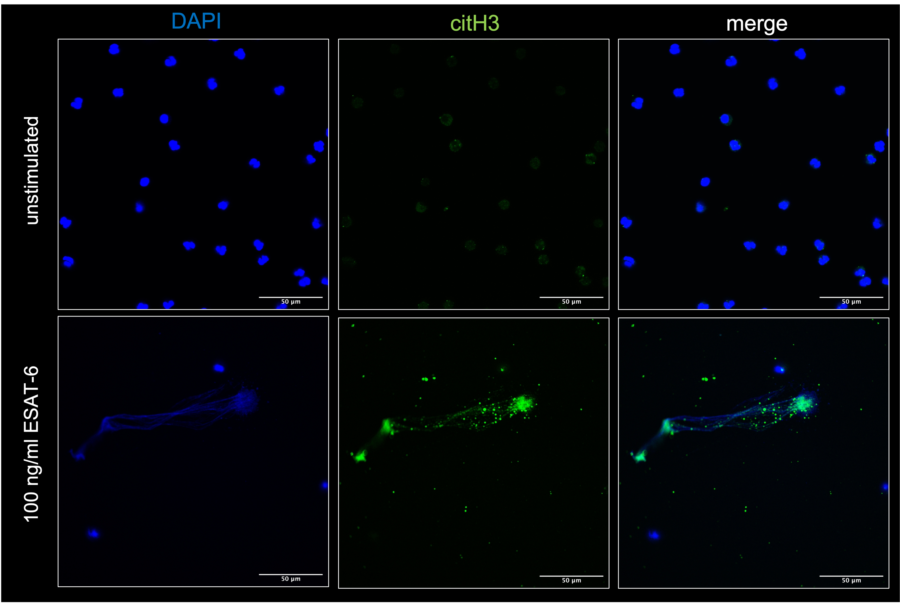Abstract
Mycobacterium tuberculosis (Mtb) is responsible for 1.6 million deaths annually. 94% of recovered patients have reduced lung function associated with premature mortality. We hypothesise, that neutrophil-derived extracellular traps (NETs) play a crucial role in lung pathology and fibrosis in TB.
Human neutrophils were infected with Mtb or stimulated by ESAT-6 to induce NETs. For confocal imaging, NETs were stained for histone H3 (citH3) and DNA. Primary human lung fibroblasts (PHLF) were stimulated with NETs or co-cultured with neutrophils and Mtb in a novel cellular model. Collagen deposition and cell differentiation were quantified using immunocytochemistry. Gene expression and secreted mediators were measured by qRT-PCR and ELISA.
Stimulation with ESAT-6 or Mtb infection induced NETosis from human neutrophils (p<0.05) Confocal imaging confirmed co-localisation of extracellular citH3 and DNA, key NET components. NETs induced collagen production and PHLF differentiation, and significantly increased MMP1 and TIMP1 secretion and gene expression (p<0.05), which was reversed upon DNase treatment.
In conclusion, NETs act on PHLF to induce lung remodelling in TB. Targeting NETs may be a potential host-directed therapy to prevent tissue fibrosis in TB.

Human neutrophils stimulated with 100 ng/ml ESAT-6 for 4h, fixed in 4% PFA. Staining for citH3 (green) and DNA (DAPI, blue). 60x magnification, Nikon A1R Ti2 confocal microscope, scale bars indicated.